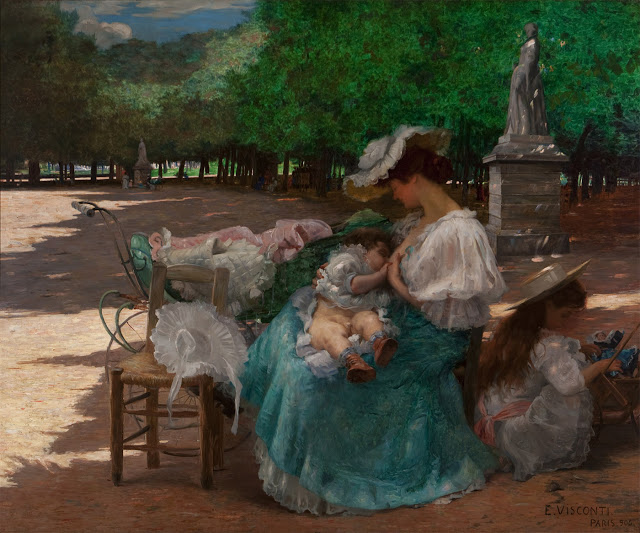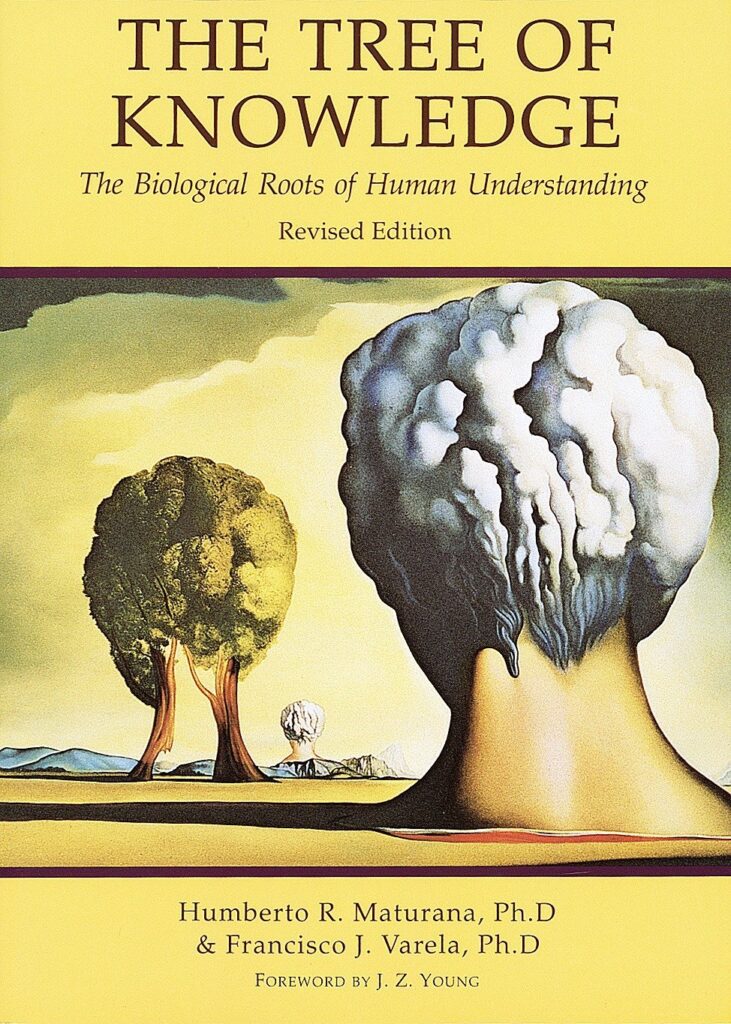In the last article, I made the claim that knowledge is embodied in the autopoietic coupling (or physiological presumptions) between a biological unity and its environment that allows that unity to maintain itself as a self-organizing system. The judgement of that knowledge depends on how precisely it predicts how the chaotic environment will be relevant to the existence of the organism. This knowledge is based on the primary teleology of a living being: its self-maintenance as a unity in an environment that both threatens it and has resources for its continued existence.
I stand by this claim, but it is only the first level of teleology, and complex biological systems today required more than mere self-organization to exist. Anything alive today, operating autopoietically, does so because it has been able replicate part of its organizing structure (genes), from the potential that is the original self-organizing unity. This self-replicating feature of the organism allows it to adapt and couple to the environment, thus emerges what we know of as evolution. But this phenomenon also has implications for the aims of organisms themselves and inserts itself into our preliminary definition of knowledge and cognition. Rather than knowledge aimed at keeping things the same, it aims at creating potential for existence of a different version of identity (genetic rather than organismal).
Existence has Requires Replication
We’ve talked about cognition as the process of autopoiesis, or the self-making process that separates the unity from the surround. If this process is successful by keeping the organism from dissolving into its entropic environment, then we can say that the organism has an organization that was predictive of the environment, that it is an accurate embodiment of knowledge. Cognition is defined as the process by which predictions are tested against the environment to continue the self-making process. One easily understands this telos when observing how any number of homeostatic feedback mechanisms in the body to maintain the internal environment. Our internal temperature, for instance, is maintained by the feedback systems’ reaction to external temperature.

However, this definition of cognition goes only so far, for each organism will eventually fail, apparently as a result of imperfect ability to predict the environment’s threat to self-organization. But biological organisms are not actually aimed at infinite autopoiesis, so it would be unfair to judge them wrong for something they were not aimed at.
Rather, an organism finds its path to lasting existence, not by endless self-organizing, but by transferring its organization to the next generation to continue the embodied pattern. This strategy must be mastered by every living creature today, by virtue of its existence. There is no need to extend the longevity of autopoiesis if its identity can be broadcast into the future, such is the strategy of the fleeting life of a microbe.
Thus, our judgement of embodied knowledge need’s another layer that accounts for the evolutionary aims of organisms.
Adaptation and Exaptation: Embedding a New Goal in Autopoietic Coupling
The whole of organisms today owe their existence to the balance of their ability to replicate and their ability to self-organize. Both are equally vital. As mentioned before, the organization that produces near infinite autopoiesis would not exist today if it could not replicate. Likewise, nothing could replicate if it wasn’t housed in a strong autopoietic structure, for that creates the material potential for replication.
Despite the fact that these two requirements are equally vital, they are organized hierarchically. According the Maturana and Varela and discussed in the previous article, autopoiesis is primary to replication in how we define “life.” What replicates if there is no self-organizing thing first?
Imagine what happens as an organism evolves through time being selected for both replication and autopoiesis in its coupling with the environment. The mechanisms which allow it to self-organize become themselves pointed in a way the encourages genetic replication. Exaptation is the term used for when an adaptation for one purpose becomes used for another. The adaptations that help maintain autopoiesis are simultaneously ordered and oriented so that they also produce an organism which replicates its genes.
What is meant by “hierarchy” is that the foundational autopoietic structure provides the boots-on-the-ground potential for replication of its structure which is the higher aim. Hierarchy is defined here by what constrains the otherwise less organized autopoietic mechanisms. Higher-order does not mean more essential, but more unifying since replication has to bring the organization into something like a decompartmentalized whole.
We can even go so far as to say autopoiesis is aimed entirely at its genetic replication, as Richard Dawkins calls organisms simply the “survival machines” of replicators. In other words, there only point of the organism is to pursue the higher goal of genetic existence. All the organism does is provide the housing for the genes.
What is important to understand here is that the structure that maintains autopoiesis is shaped and utilized by the higher goal of the genes. Their local goal has to serve the broader goal. Our “homeostats,” or sensory-motor mechanisms to maintain homeostasis and autopoiesis, are organized to encourage behaviors and needs that not only continue autopoiesis but also incentivize genetic replications. So the lower aims of autopoiesis are exapted to be aimed as a whole to the aim of passing on genes.
Like a painter endows each brushstroke with its own goodness and with the goodness of the painting, the organism acts towards its own end so that it may produce a broader end.

The Follow-Through
To understand how to think about this phenomenon in more graspable terms, we must use an analogy. This one I heard Bret Weinstein use to understand religion and cultural values through a biological/evolutionary lens. Cultural phenomena, he says, are epigenetic in the sense that they grow out of evolutionary adaptations, but they are ultimately essential in their own right for genetic survival. He says these phenomena are like a follow-through in tennis.
In tennis, the follow-through seems like a superfluous element of the swing. Clearly the only part that matters is the moment of contact with the ball. However, if you were to eliminate or ignore the follow-through (perhaps by putting your own stylish flourish into it), the “essential” moment of contact would never land properly.
This relationship is seen between the hierarchically embedded goals of autopoiesis and evolution. Because the autopoietic machinery is aimed at a higher goal, it functions best when its minute actions are ordered to accomplish the larger goal, the full swing. The follow-through affects the minute actions of the swing which has a small window for error.
If an organism were to become conscious of its goal of maintaining autopoietic stability, and set its goals to aim what it thought that meant, it would not only fail at reproduction, it would fail also at its autopoietic stability. This is because that which maintains autopoiesis is exapted into the higher order goal of genetic proliferation; a mechanism to eat is under the constraint of its need to reproduce. The conscious organism requires the goal beyond the present goal.
Meaning and the Subtleties of Knowledge
Not only is this an argument against the reductionism of assuming an essential causal moment, the proverbial moment of contact, is way to true knowledge, but it is an acknowledgement that two actions which are nearly exactly the same can be significantly different because of their orientation to an apparently superfluous goal.
First is the argument against reductionism. In a lecture on chaotic systems, Dr. Robert Sapolsky speaks on how even precisely observing single state cannot help us predict the future. Even if we could see perfectly the moment of contact, down to the very atom, we could not calculate where the ball would go or whether it would beat the opponent. Yet the player, if skilled, can hit the ball nearly exactly where she desires. Likewise, the maintenance of autopoiesis cannot function with only the parts that according to reductionism are the most essential. For their overall end is in reproduction of the system. Even here, what appears directly unessential is the broader pattern that proves itself vital.

This is why we observe phenomena like chopping wood being better for your health than a gym workout with the same movement. This is why eating in good company and conversation is healthier than eating the same meal alone or in bad company. The differences in health are subtle and not noticeable to the reductionist, but in the long run it is what makes the difference.
“Better a dry crust with peace and quiet than a house full of feasting, with strife.” – Proverbs 17:1
This can also be seen particularly in the realm of “mental” health, where the relationship between higher aims and bodily health are tightly coupled. Mental health “advocates” act like we need discipline our bodily health to improve our mental health. While the connection between physical and mental health is clear, to me they get it backward. They offer health as a sedative for someone content with an aimless life. If there is to be any success with this method it will be in creating an inadvertent goal that goes beyond health.
That approach would convince a healthy single-cell organism to view cell-division as detrimental to its health. Rather it should focus on its metabolic processes and fortifying its membrane to improve its longevity. Cell mitosis is such a burden on the resources! Of course, if an organism ever took that absurd advice, we could imagine that it would quickly die because it had forgotten that is autopoiesis is contingent on its effort towards mitosis.
To make a point, I simplified the genetic motivations of organisms to reproduction. Fortunately for us, the motivation gets more complicated when considering patterns like inclusive fitness, which will be discussed in the next article. The point I wanted to make is a biological justification for nested levels of embodied cognition and how they interact. This hierarchical system will extend upwards into more complicated realms of cognitive science, so do not worry, I am not going to try convincing you that having the most children is the absolute way to truth, just like I was not going to convince you that the closest thing we have to embodied truth is prolonged autopoiesis. This has been setting the scene for the arrival of conscious definitions of cognition.




